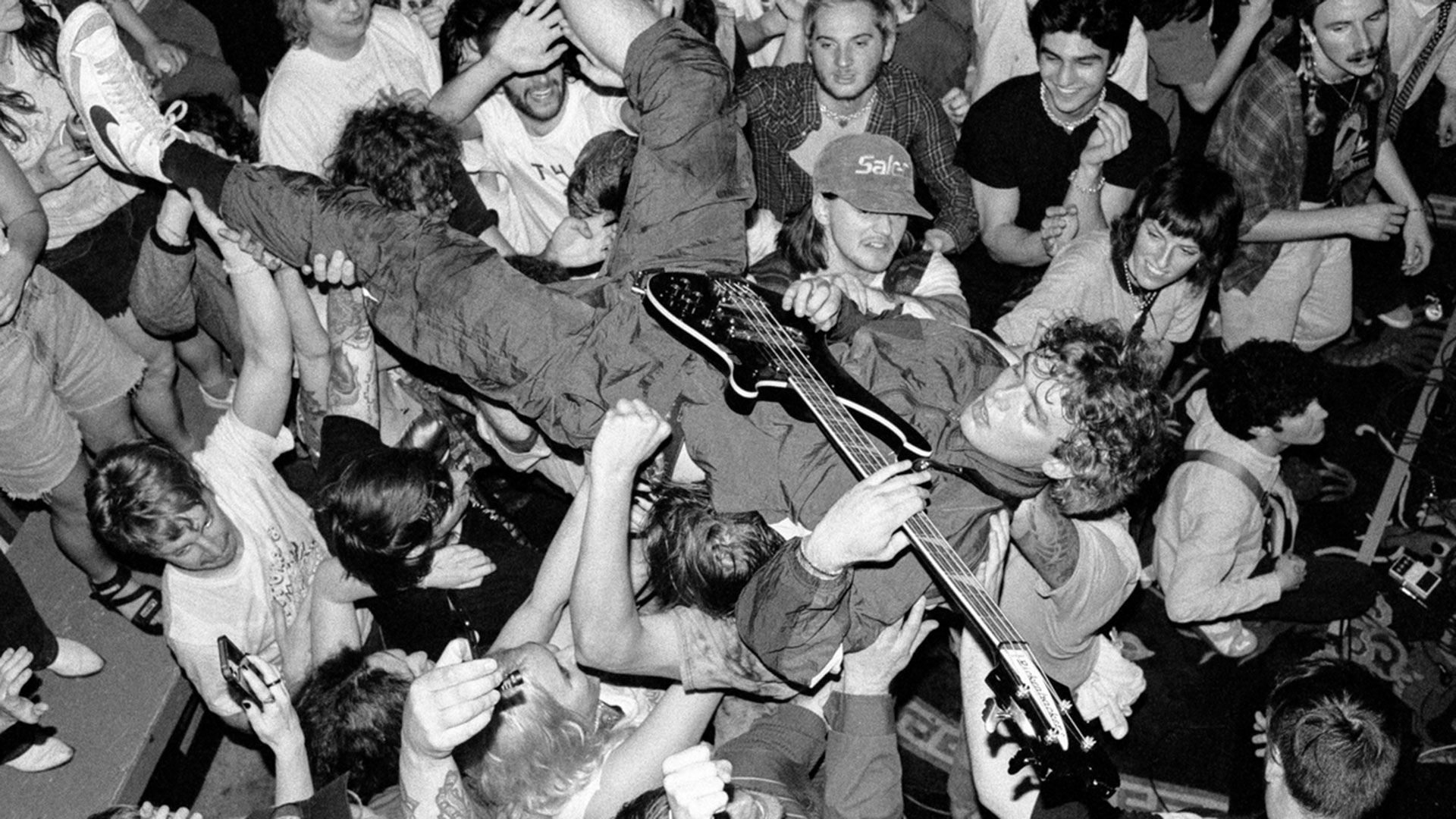“I was bullied for my technique. I just used that as motivation… keep playing until you smoke the haters”: Meet Snõõper, the Jack White-signed Nashville indie punks making art from 100mph fretwork
Snõõper mix high-speed leads, puppetry, props and video art with hardcore gigs that see their gear taken out by airborne bodies – “It goes spectacularly wrong about one-third of the time,” says guitarist Connor Cummins

‘Speed’ can be a dirty word for some guitarists. Invoke the term and you risk triggering a lengthy rant about shred, mocking comments about spandex before it all simmers to a mumble about “David Gilmour” and “finger tone”.
Nashville’s Snõõper are an exception, in being both cool enough to be signed by Jack White’s Third Man Records and fast enough to leave you panting between licks.
Their live show is a whirling amalgam of papier maché, puppetry, whistles, onstage props, video art, audio samples and airborne bodies.
Somehow, in between this chaos, guitarists Conner Cummins and Ian Teeple weave in unfathomably fast downstrokes and lightning quick lead work that flits in and out of your ears like passing insects (indeed, human flies tend to appear at their shows).
“It goes spectacularly wrong about one-third of the time,” observes Cummins. “People typically stage dive, then our guitarists will also be in the crowd getting unplugged, et cetera. At one of our Melbourne shows [on tour in Australia] someone was thrown full force at us sideways and just fell on to all our gear.”
Regardless, for the other two-thirds of the time it works spectacularly well. Nashville punk stalwart Cummins formed the group with vocalist Blair Tramel (“an early education teacher with a sideline in wickedly funny animation and art”) guided by a determination to do something different – and they are doing just that.

By accident or design, their frantic performances have won them a lot of fans, including their aforementioned label head honcho White, and hardcore icon Henry Rollins. Central to it all is Cummins’ blistering, downstroked playing style.
Get The Pick Newsletter
All the latest guitar news, interviews, lessons, reviews, deals and more, direct to your inbox!
“The guitars in Snõõper are the glue of the band in the ‘middle school’ way,” he jokes. “The rhythm holds everything together, but then you get it all over your hands.”
Cummins hails the influence of players like Johnny Ramone, Devo’s Bob 1 and late Poison Idea guitarist Pig Champion on his development – and his fundamental need for speed.
“There are fast solos in the music,” says Cummins. “But it’s different than shred players. The Fix, Koro, early Poison Idea and Die Kreuzen are big influences. I try to downstroke almost all the songs on the LP and live for maximum effect.”
There’s a lot more than simple pace going on, too. The complexity of the ideas, the smartly-timed pauses and the bouncing exchanges between Cummins and Teeple on tracks like Fitness – all 1.55 of it, below – showcase a an understanding of structure, pacing and melody that goes way beyond the usual Ramones-style ‘1-2-3-4’.
The result has been described with some authority by Rollins as “a band who, in a 33 1/3 rpm world, make 45 rpm music they play at 78 – and it completely works.”
The band have just completed the challenge of trying to capture all this on their debut album, Super Snõõper. The record is packed with the same frenetic energy and tones from their shows – with Cummins using a new wave-favorite, the Roland Jazz Chorus, as a cornerstone for his lush, overdriven sound.

“My rig for the album is the same as our live setup: a JC-120 with no distortion or reverb with a MXR Micro Amp and Boss DD-7,” explains Cummins. “I use a ‘94 AVRI [American Vintage Reissue] Fender Jaguar with Curtis Novak Jag-V bridge pickup and Mastery bridge/vibrato. I never play the neck pickup.
“Most guitar heads scoff at the use of the Jazz Chorus for my tone, but I think it’s because they rely on onboard distortion. I have five different JC combos and two JC-120H heads. To me, they are so clean that you can truly hear the guitar playing and model your sound from the ground up.”
It’s not the only aspect of Cummins‘ approach to the guitar to go against the grain. Most of his playing career has been about developing a sound and a playing style that he can truly call his own, whether or not other players appreciate it. We ask him if he has any advice for other players in a similar situation.
“When I started playing guitar, I was bullied by people I was in bands with for my technique – the downstrokes, speed, and style,” responds Cummins.
“Instead of getting upset about it I just used that as motivation to become the absolute best player I could be. So don’t let anyone put you down – just keep playing until you smoke the haters!”
- Super Snõõper is out now. Head over to Instagram to keep up to date with the band’s live plans.

Matt is Deputy Editor for GuitarWorld.com. Before that he spent 10 years as a freelance music journalist, interviewing artists for the likes of Total Guitar, Guitarist, Guitar World, MusicRadar, NME.com, DJ Mag and Electronic Sound. In 2020, he launched CreativeMoney.co.uk, which aims to share the ideas that make creative lifestyles more sustainable. He plays guitar, but should not be allowed near your delay pedals.
“His songs are timeless, you can’t tell if they were written in the 1400s or now”: Michael Hurley, guitarist and singer/songwriter known as the ‘Godfather of freak folk,’ dies at 83
“The future is pretty bright”: Norman's Rare Guitars has unearthed another future blues great – and the 15-year-old guitar star has already jammed with Michael Lemmo









